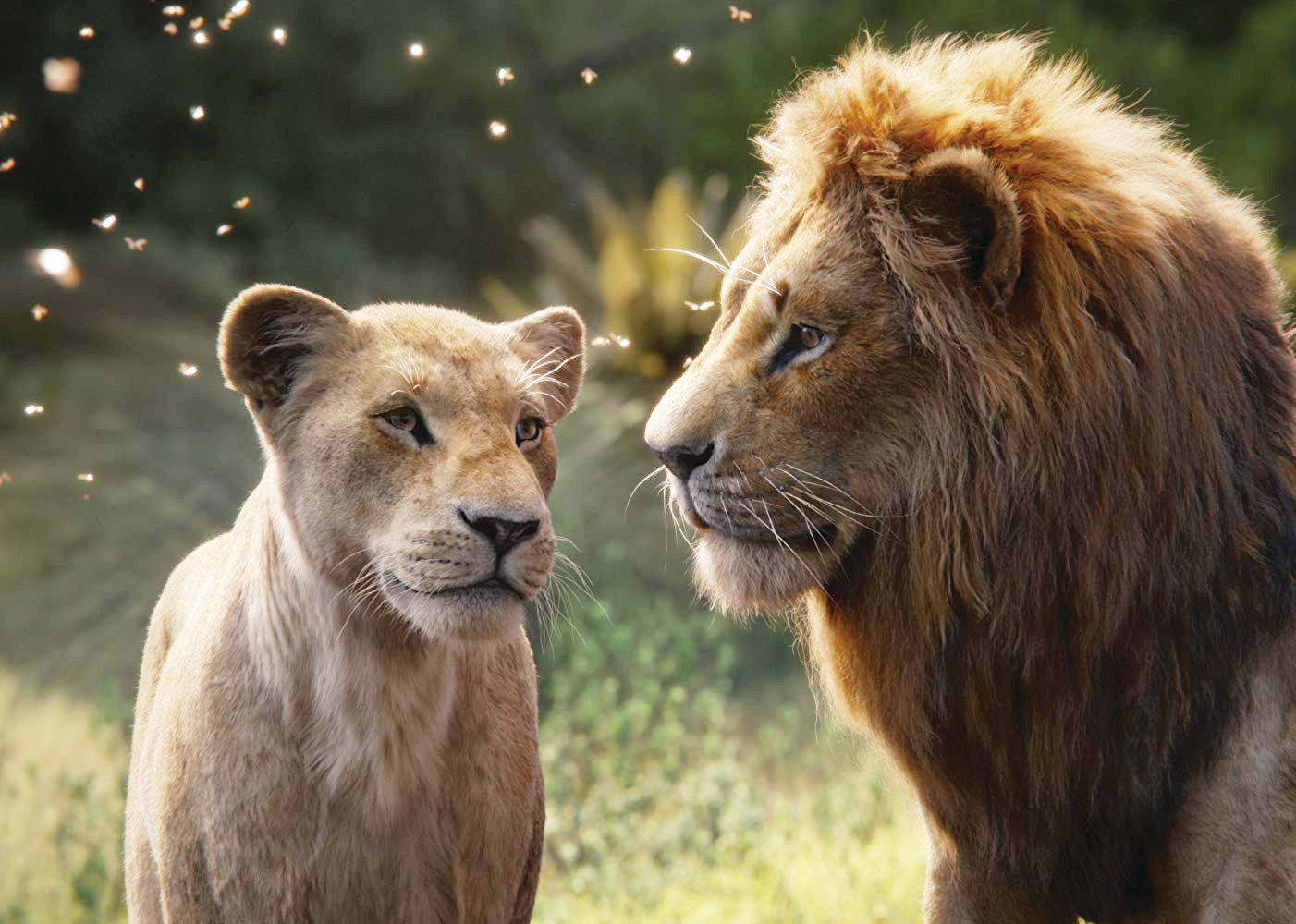
Disney’s ongoing mission to produce new live-action remakes of their animated film classics is a bit like when you convert your old vinyl record collection to digital. It’s a nod to the advance and efficiency of modern technology, but the new copies don’t add anything substantially beneficial to the originals.
“The Lion King” is Disney’s most audacious upconversion yet, tackling an already august film that’s merely 25 years old, blessed with a soundtrack and script that doesn’t feel dated. Disney’s recent “Aladdin” remake updated a fun yet flawed original. On the other hand, “The Lion King” is almost sacrosanct, thus putting Disney and director Jon Favreau’s cash-grab in a Catch-22: change too much and get pilloried, or change little and suffer a collective shoulder shrug.
Favreau and company opt mainly for the latter, fashioning a live-action revamp that isn’t really live action, with the same story and the same songs. The narrative still revolves around young lion cub Simba and his maturation into the circle of life. His father Mufasa (James Earl Jones, the lone voice actor from the original film to reprise his character) rules over the Pride Lands in Africa, with his precocious cub Simba (JD McCrary) set to one day assume dad’s throne. None of that sits well with Scar (Chiwetel Ejiofor), Mufasa’s brother, who plots to dispatch both his sibling and nephew in order to become king, aided by a snarling pack of hyenas exiled to the outer reaches of the kingdom.
The rest of the tale is familiar enough that it doesn’t need much regurgitation: Mufasa “disappears,” Simba runs away, and Scar runs the Pride Lands into the ground before finally getting his comeuppance. Along the way, Favreau’s photorealistic palette, which he honed on his reimagining of “The Jungle Book,” becomes the film’s biggest boon and bust. The digital depiction of wildlife is visually impressive, with the renderings of sweeping savannas and the majestic movement of animals lending a sense of grandeur to both panoramas and periodic moments of quiet contemplation. Still, after the new wears off, the spectacle begins to feel like an episode of “Planet Earth” with a good soundtrack.
The real problems begin when those characters start talking and singing. The technological execution is fine. But traditional and modern computer animation removes its characters from the confines of reality, and thus spurs the imagination of the viewer. When Pumbaa the warthog and Timon the meerkat are prancing around in the original film, singing and wisecracking, they’re fantastic creations far removed from any notion of their natural habitat. In the remake, the unreality of their behavior is shoehorned into a lifelike setting, and the result is both disjointed and drains away much of the characters’ personality.
Some of the voice actors are better than others. Glover and Jones are up to the task. Billy Eichner’s Timon, Seth Rogen’s Pumbaa, and John Oliver’s Zazu lend much-needed levity to otherwise darker story rendering. Ejiofor’s Scar is fine by itself but pales in comparison to Jeremy Iron’s definitive interpretation. And while Beyoncé’s musical numbers pack an expected wallop, her voicing of Simba’s gal pal Nala is lacking.
While the quality of the crooners is solid, the new versions of iconic tracks like “The Lion Sleeps Tonight,” “Can You Feel the Love Tonight” and “Hakuna Matata,” that paean to carefree living, feel obligatory and occasionally like they’re being performed for a TV singing competition. But in the end, the biggest sin of the new “Lion King” is the unanswered question of why. It’s not like today’s kids aren’t likely to watch the original. The most apt response, of course, is found in the inevitable box office haul. It’s Disney’s version of the circle of life, but here it feels more like cannibalization.
Hakuna matata, I guess.
Favreau’s photorealistic palette, which he honed on his reimagining of ‘The Jungle Book,’ becomes the film’s biggest boon and bust. The digital depiction of wildlife is visually impressive, with the renderings of sweeping savannas and the majestic movement of animals lending a sense of grandeur to both panoramas and periodic moments of quiet contemplation. Still, after the new wears off, the spectacle begins to feel like an episode of ‘Planet Earth’ with a good soundtrack.